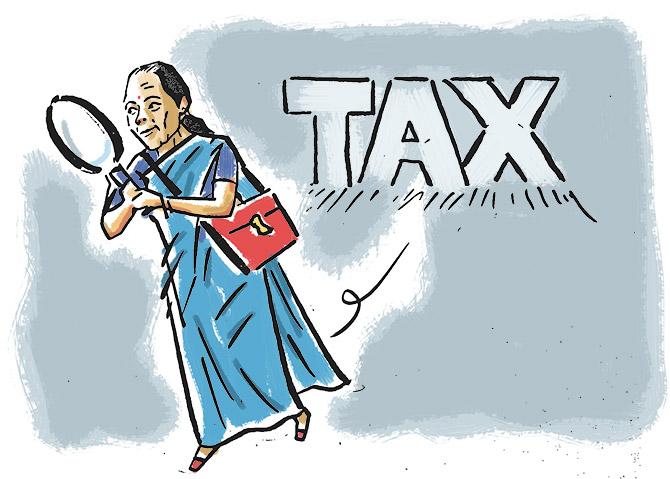The continuing fiscal stimulus is heavily tilted towards capex, to the extent that it chips away a part of revenue spending. Accounting for other areas of revenue expenditure, such as salaries, pensions, subsidies and defence (committed spend), the room to spend on welfare schemes, health and education will narrow in FY22.

Illustration: Dominic Xavier/Rediff.com.
While the central government plans to raise capital expenditure by 26 per cent in the upcoming year, current spending to cover establishment expenses, welfare schemes and interest payments is set to fall 2.7 per cent to Rs 29.3 trillion in 2021-22, from Rs 30.1 trillion in FY21.
What could be worrisome is that revenue expenditure would fall 8.6 per cent in FY22 if we exclude interest payments, which go into servicing outstanding debt, Budget documents show.
The continuing fiscal stimulus is thus heavily tilted towards capex, to the extent that it chips away a part of revenue spending. Accounting for other areas of revenue expenditure, such as salaries, pensions, subsidies and defence (committed spend), the room to spend on welfare schemes, health and education will narrow in FY22.
It is likely that this is done to control the expansion in revenue deficit, which is higher than revenue receipts. The latter have fallen 7.7 per cent in FY21, and are expected to grow 15 per cent in FY22.
Despite this fall, revenue expenditure has been held high this year through capital receipts, which have crossed revenue receipts probably for the first time. Before FY20, revenue receipts were more than twice the capital receipts.
Market borrowings, which form the majority of capital receipts, are pegged at Rs 12.7 trillion in FY21. Thus, the government will borrow Rs 80,000 crore more in the remainder of this year.
The bond market had not expected this move, and was factoring in a status-quo in borrowing. Finance Minister Nirmala Sitharaman gave a higher-than-expected number for market borrowings in FY22.
The announcement of borrowings to this extent could raise bond yields -- cost of borrowings for the government -- in future, especially when the Reserve Bank of India is expected to suck out liquidity from the market, said Harihar Krishnamoorthy, head of treasury at First Rand Bank.
Yields on 10-year government bonds may rise to 6.25 per cent after remaining below 6 per cent for the most part of 2020, experts said. These closed at 6.08 per cent on the day of the Budget, up 16 basis points from the previous close.
But if market borrowing was a surprise, a bigger surprise was that the government now expects Rs 4.8 trillion from securities against small savings (post office deposits, savings certificates, public provident fund) in FY21 -- twice the level a year ago.
The National Small Savings Fund will now stop lending to government institutions and schemes, and lend its bandwidth to the Centre. The loans typically command a higher interest rate than market loans, as the underlying instruments award higher than market rates to depositors/investors.
Securities against these savings will remain high at Rs 3.9 trillion in FY22, inching closer to market borrowings next year, which are pegged at Rs 9.7 trillion. About five years ago, the receipts from small saving were negligible.












 © 2025
© 2025